

Aizuwakamatsu prospered as a castle town of the Aizu domain and still retains traces of samurai culture.
The region's heavy snowfall has fostered a unique culture of handcrafted goods.
The mystical scenic views, such as the Goshikinuma Ponds, were created by the eruption of Mt. Bandai, also known as Aizu Fuji (Mt. Fuji of Aizu).
Experience the history, culture, and climate that you can only find here.
The Aizu region is renowned for the samurai's last resistance against the new government forces during the Meiji Restoration (1868). Their unwavering commitment to principle is a legacy that continues to inspire the people of Aizu today. Just a short journey from Aizuwakamatsu lies Ouchi-juku, a historic post town designated as a cultural heritage site. Here, you can find many remnants of traditional culture and historical sites, including thatched-roof houses and landscapes that vividly reflect the Edo period.
Search for applicable facilitiesMt. Bandai has experienced eruptions and volcanic collapses since ancient times.
Lake Inawashiro, formed by an eruption about 50,000 years ago, and the mystical Goshikinuma Ponds, created by the 1888 eruption, were rated as Michelin Green Guide 1-star attractions.
Most of the Urabandai area is included in a national park, and the scenic spots created by nature can be enjoyed, which is one of the charms of the Aizu area.
Aizu's traditional crafts are said to have emerged as a result of the need for indoor work during the winter months, when heavy snowfall made going outside difficult.
Experience the refined craftsmanship and culture of Aizu through its traditional arts, including Aizu lacquerware with a history of over 400 years, the skillfully made painted candles, and sake brewing made possible by the region's abundant rice and water.
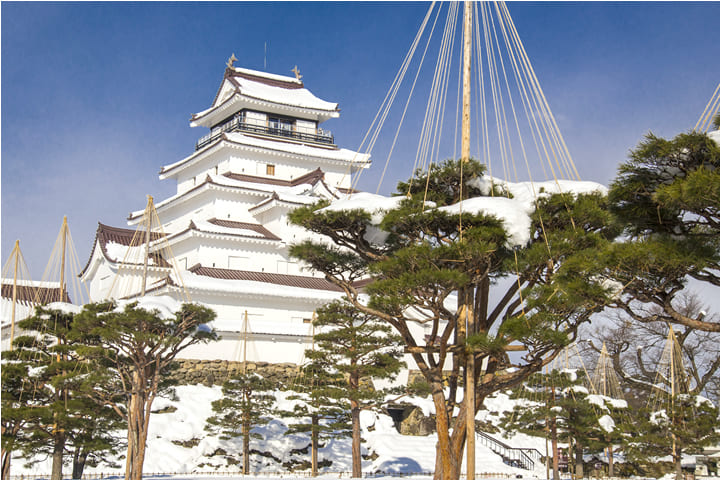
Aizuwakamatsu City
A symbol of Aizuwakamatsu City. Famous as an invincible castle, it endured a month-long siege by the new government forces during the Boshin War (1868). Although it was later demolished, the castle tower was rebuilt in 1965 and the roof tiles were replaced with the original red tiles in 2011.
〒965-0873
1-1 Otemachi, Aizuwakamatsu-shi, Fukushima
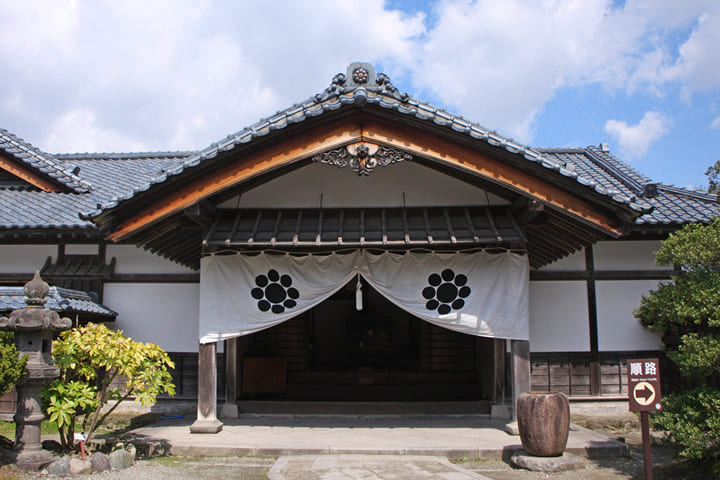
Aizuwakamatsu City
A museum where you can experience the culture and history of the Aizu domain through historical buildings, artifacts, and interactive experiences. On the expansive grounds, you can find restored former residences and tea rooms, allowing you to experience the era when the samurai lived.
〒965-0813
1 Innai, Ishiyama, Higashiyamamachi, Aizuwakamatsu-shi, Fukushima

Aizuwakamatsu City
National Important Cultural Property. Located on Mt. Iimori, where the graves of the Byakkotai (White Tiger Brigade), a group of young samurai warriors established by the Aizu domain, are situated. Due to its spiraling exterior, it is commonly called the Sazaedo (literally, "horned turban hall"). The official name is Entsu Sansodo. The interior features a single, continuous sloping pathway, designed so that visitors won't cross paths with others.
〒965-0003
155 Takizawa, Yahata, Ikkimachi, Aizuwakamatsu-shi, Fukushima
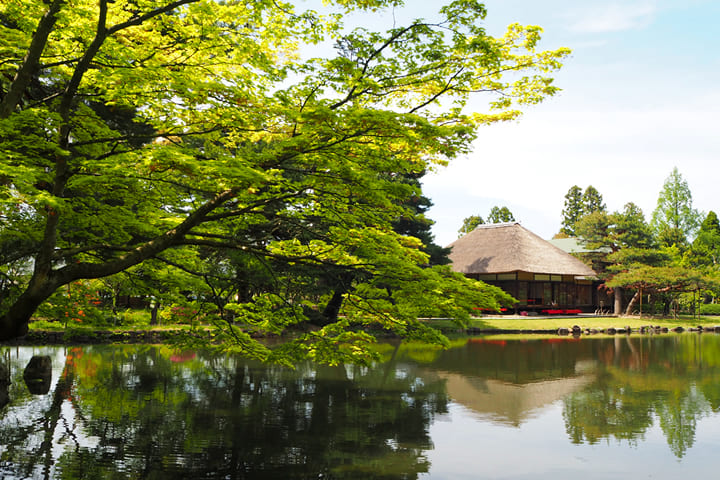
Aizuwakamatsu City
A vacation retreat beloved by successive lords of the Aizu domain. Because the lord established a medicinal herb garden within the grounds with the desire to save his people from disease, it came to be called Oyaku-en (Oyaku Garden), derived from "Otonosama no Yakuen." Approximately 400 types of plants are cultivated here, with the seasonal attractions including spring plum and cherry blossoms, autumn foliage, and winter snowscapes.
〒965-0804
8-1 Hanaharumachi, Aizuwakamatsu-shi, Fukushima
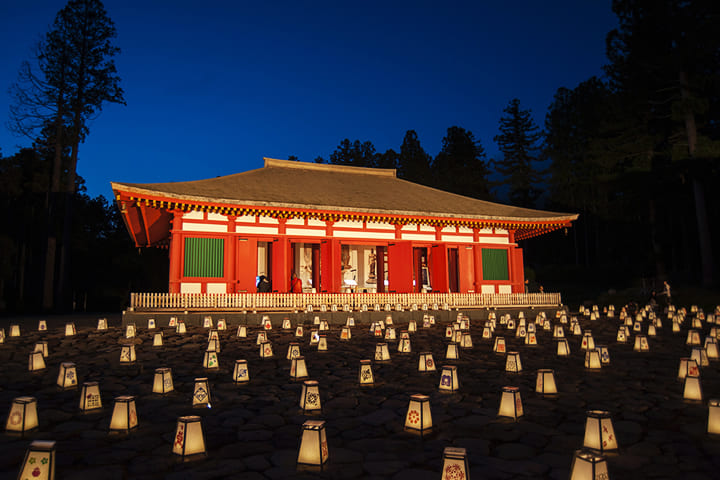
Bandai Town
A temple founded by the monk Tokuitsu, who studied Hosso Buddhism in the southern capital (present-day Nara Prefecture) in the 800s. Located at the foot of Mt. Bandai, the temple had a history of over 1,000 years until it was abandoned in the 1800s. Later, in 1970, it was designated as a national historic site, and in recent years, the Kondo Hall and the Chumon (inner gate) have been restored.
〒969-3301
38 Teranishi, Bandai, Bandai-machi, Yama-gun, Fukushima
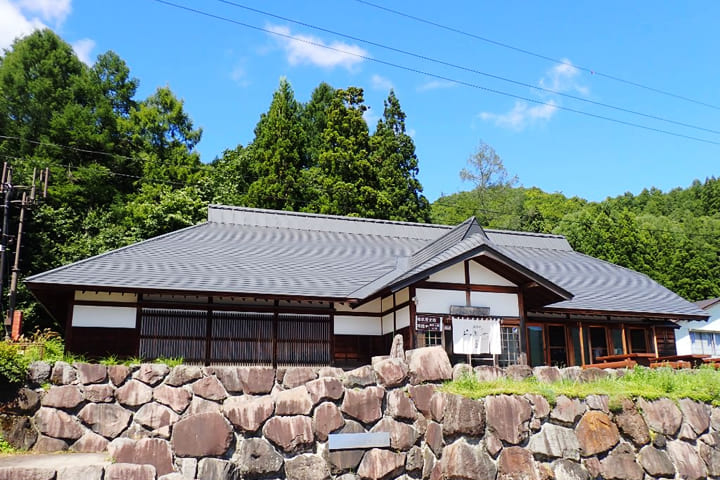
Kitashiobara Village
On display and introduced are a diorama of Hibara-juku, a post town that sank beneath a lake due to the eruption of Mt. Bandai, and materials related to the Aizu-Yonezawa Kaido Main Road, a historical road that many famous people are said to have traveled. At the adjacent Oku Urabandai Ramen-ya (formerly Sioya), you can enjoy Aizu Yamajio Ramen made with locally produced Aizu mountain salt.
〒966-0501
1034-19 Ubatasawa, Hibara, Kitashiobara-mura, Yama-gun, Fukushima
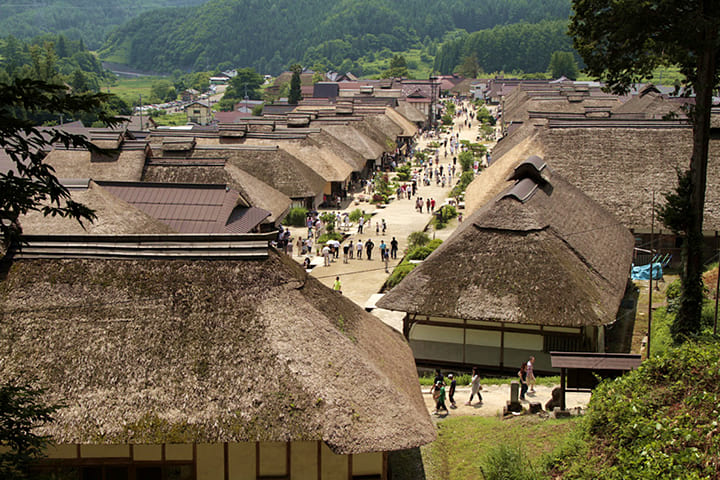
Shimogo Town
A renowned landmark that still retains the charm of the Edo period of 400 years ago. Once a thriving post town on the highway from Aizu to Nikko, the traditional thatched-roof houses that line the streets evoke a sense of stepping back in time. The old folk house is used as a shop, where you can enjoy meals, shopping, and more.
〒969-5207
Ouchi, Shimogo-machi, Minamiaizu-gun, Fukushima
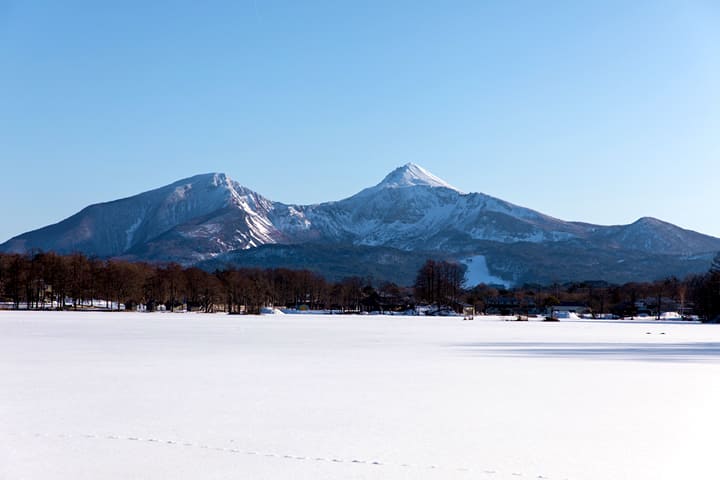
Inawashiro Town, Bandai Town, Kitashiobara Village
A volcano with an elevation of 1,816 meters, spanning Inawashiro Town, Bandai Town, and Kitashiobara Village. Also known as Aizu Fuji (Mt. Fuji of Aizu), it is counted among Japan's 100 Famous Mountains, and in 2011, it was certified as a Japan Geopark. Multiple volcanic eruptions and collapses have shaped the mountain, resulting in breathtaking scenery at its base.
Inawashiro Town, Bandai Town, and Kitashiobara Village in Fukushima Prefecture
More Information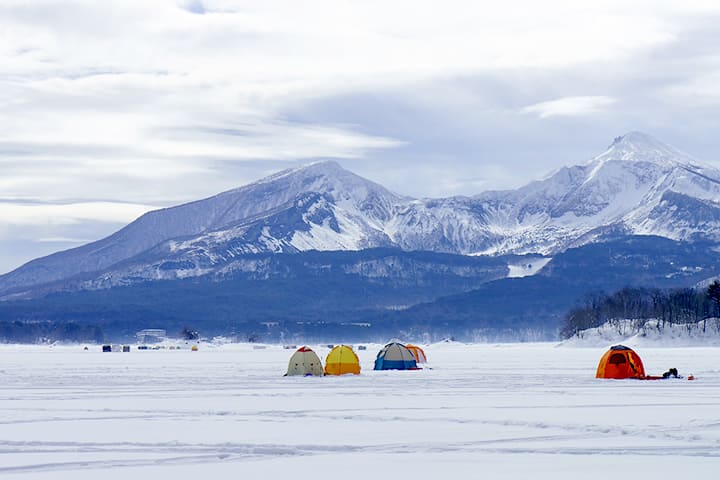
Kitashiobara Village
The largest lake in Urabandai (the area north of Mt. Bandai). In spring, cherry blossoms; in summer, fresh greenery; in autumn, vibrant foliage; and in winter, snowy landscapes—the scenery changes with each season. When the lake surface freezes in winter, you can walk on it and enjoy ice fishing for smelt, a unique winter pastime.
〒966-0501
Hibara, Kitashiobara-mura, Yama-gun, Fukushima
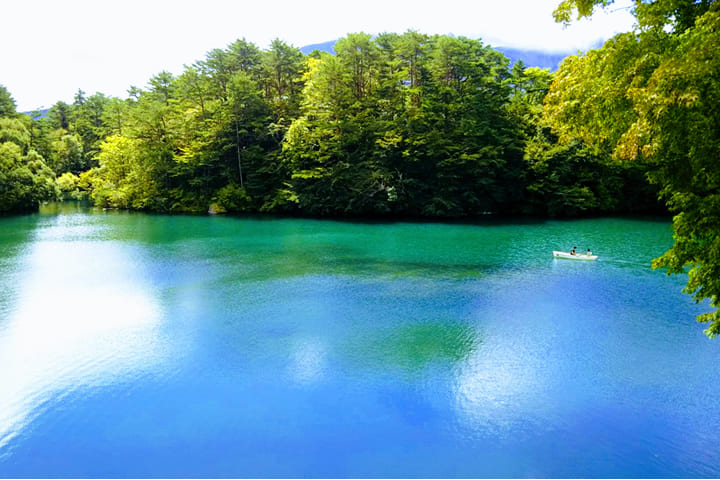
Kitashiobara Village
The Goshikinuma Ponds were formed by a steam explosion of Mt. Bandai in 1888. In 2016, it was rated as a Michelin Green Guide 1-star attraction. The name was given because it displays a variety of colors, such as emerald green, cobalt blue, and pastel blue, depending on the season and weather.
〒966-0501
Hibara, Kitashiobara-mura, Yama-gun, Fukushima
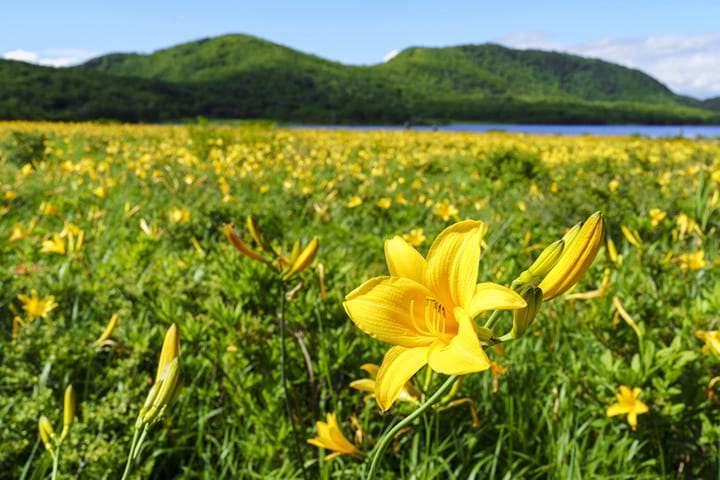
Kitashiobara Village
A caldera lake formed by volcanic activity of Mt. Nekomadake about 500,000 years ago. Designated as a national natural monument, it has the largest population of broad dwarf day lily (nikko kisuge) in Japan. During the peak season from late June to early July, the entire marshland is covered in a yellow carpet, creating a magical atmosphere.
〒966-0501
Hibara, Kitashiobara-mura, Yama-gun, Fukushima
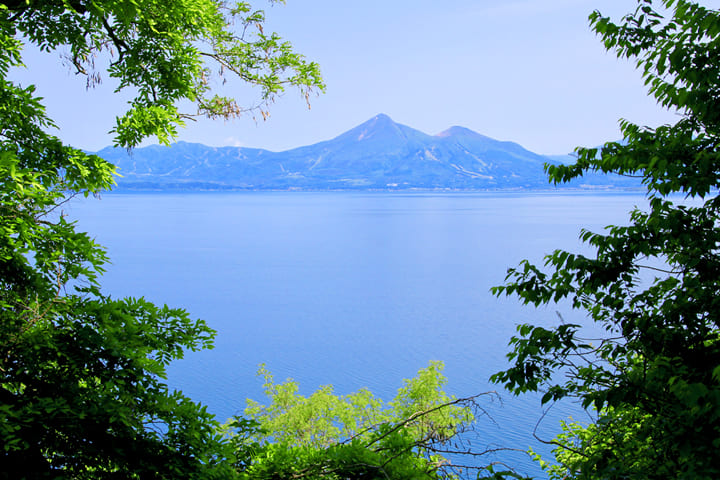
Aizuwakamatsu City, Koriyama City, Inawashiro Town
A lake spanning Aizuwakamatsu City, Koriyama City, and Inawashiro Town, ranking fourth in size in Japan. Due to its high transparency, it is also referred to as the "Heavenly Mirror Lake" (Tenkyoko). In summer, you can enjoy swimming and water sports in the lake, and in winter, you can see flocks of swans flying in from Siberia.
〒969-3101
Inawashiro-machi, Yama-gun, Fukushima
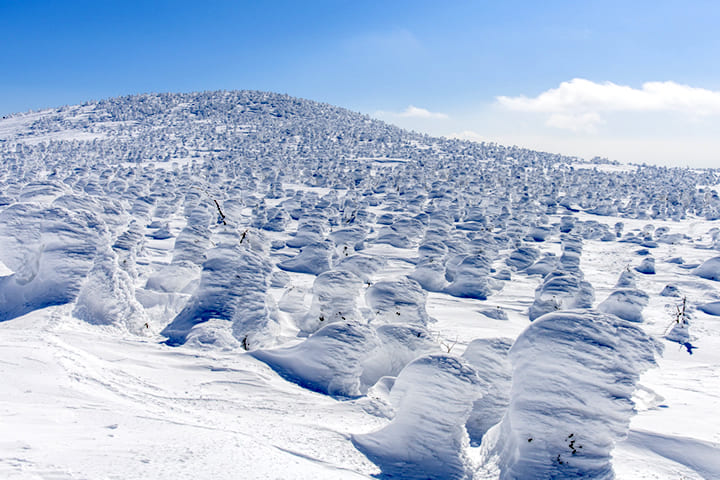
Kitashiobara Village
A mountain that straddles the border between Fukushima and Yamagata prefectures, accessible from the summit area of Grandeco. In winter, you can enjoy a panoramic view of the vast expanse of frost-covered trees. Another recommended spot offers a stunning view of both Mt. Bandai and Lake Hibara.
〒966-0501
Hibara, Kitashiobara-mura, Yama-gun, Fukushima

Lacquerware with a history of over 400 years. Lacquerware became widespread due to the humid climate characteristic of basin areas surrounded by mountains, making it an ideal environment for working with lacquer. Beyond its auspicious patterns and exquisite decorations, it's also highly durable, resistant to water, acids, and alkalis.
Various locations in Aizu
More Information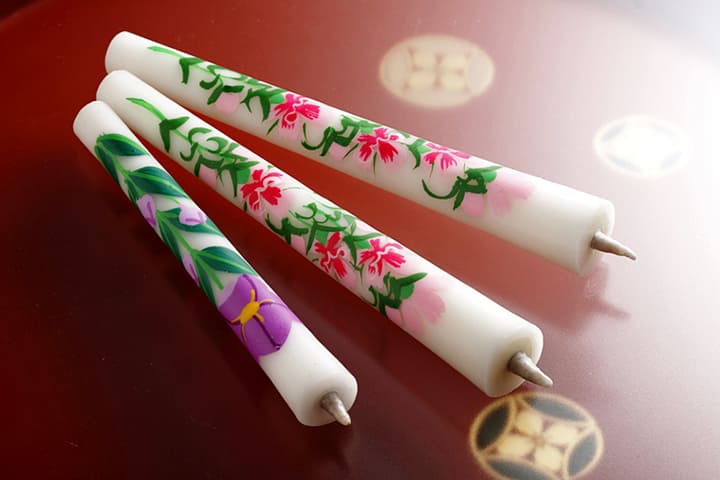
Candles adorned with beautiful designs of chrysanthemums, plum blossoms, and other motifs. About 500 years ago, the local lord at the time, Morinobu Ashina, encouraged the planting of lacquer trees, which led to the beginning of candle making. Subsequently, by inviting experts from Omi Province (present-day Shiga Prefecture) and making improvements, decorative designs began to be added.
Various locations in Aizu
More Information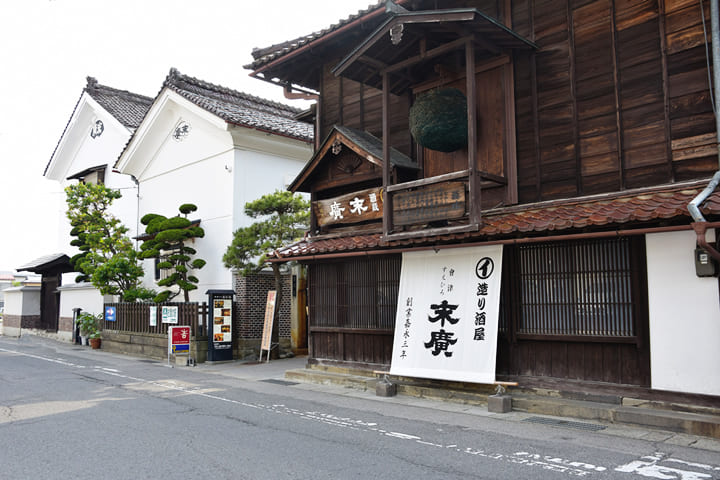
The Aizu region, which possesses all the necessary conditions for producing delicious sake, such as a cold climate, delicious water, and delicious rice, is home to numerous sake breweries renowned throughout the country. In Aizuwakamatsu City, you can find traditional sake breweries like Suehiro Sake Brewery, where old-fashioned buildings are still preserved.
Various locations in Aizu
More Information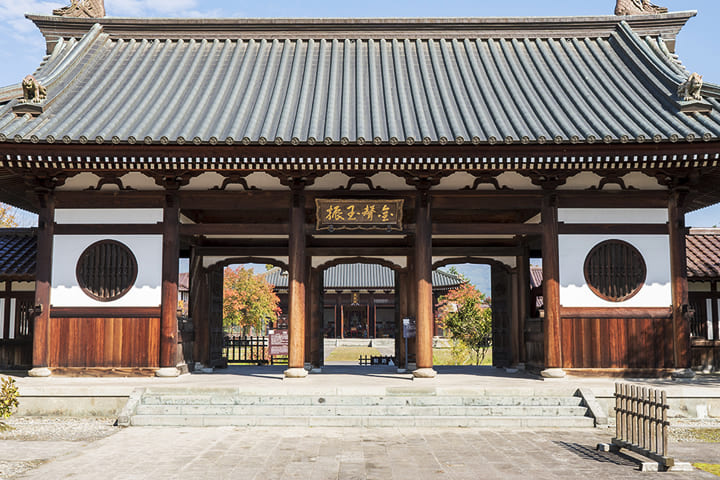
Aizuwakamatsu City
The school was completed in 1803, and on its vast grounds, buildings such as a martial arts training hall, an observatory, and a swimming pool were constructed. At that time, children of the Aizu domain entered the school at the age of ten and devoted themselves to academics and martial arts. Nowadays, you can enjoy Bushido experiences such as archery and Zazen meditation, as well as activities like painting Akabeko cows.
〒969-3441
10 Takatsukayama, Minamikoya, Kawahigashimachi, Aizuwakamatsu-shi, Fukushima
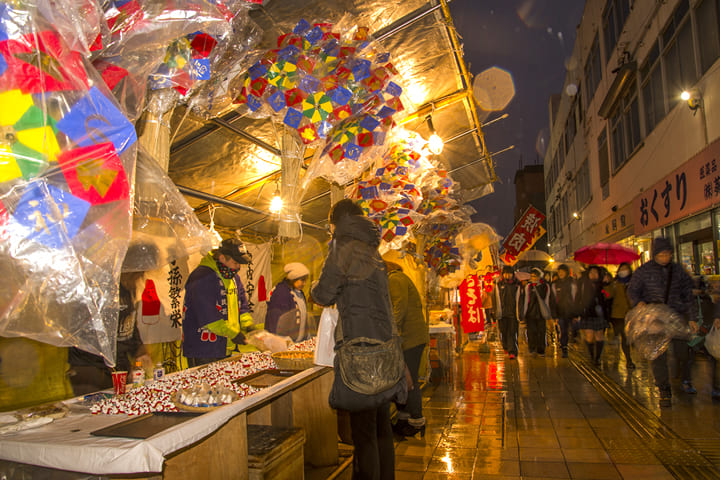
Festivals held throughout the Aizu region during the New Year. Even the snow-covered, frigid Aizu becomes bustling with crowds on this day. Among them, the Tokaichi Festival held in Aizuwakamatsu City is the largest in scale. At the Hatsuichi Festival, traditional folk crafts such as okiagari-koboshi (roly-poly toy), windmills, and daruma dolls, which are considered to be lucky charms, are sold.
Various locations in Aizu
More Information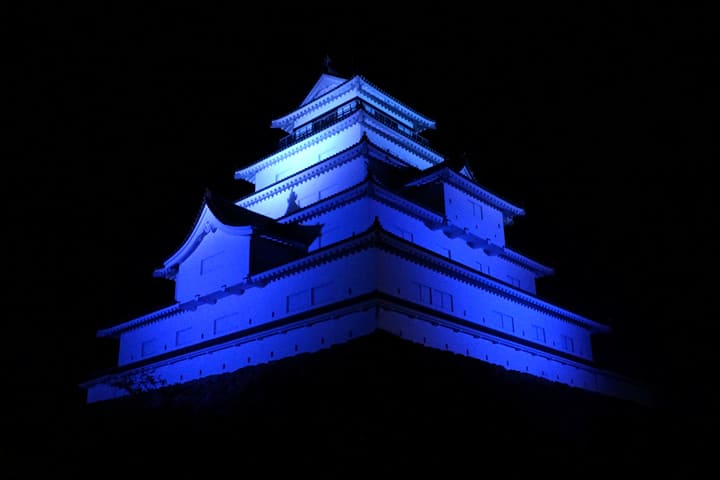
Aizuwakamatsu City
A Yataimura (food stall village) is available in Tsurugajo Castle Park, the symbol of Aizuwakamatsu. Enjoy the flavors of Aizu along with the illuminated castle tower.
Event Dates: December 7, 8, 9, 14, 15, 21, 22, 28, and 29, 2024; January 11, 12, 18, 19, 25, and 26, 2025; February 1, 2, 15, 16, 22, and 23, 2025
〒965-0873
1-1 Otemachi, Aizuwakamatsu-shi, Fukushima(Tsurugajo Castle)